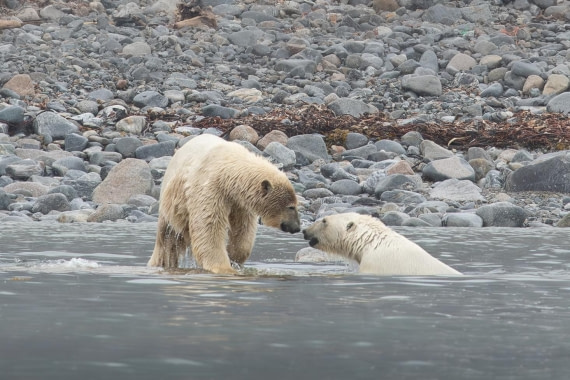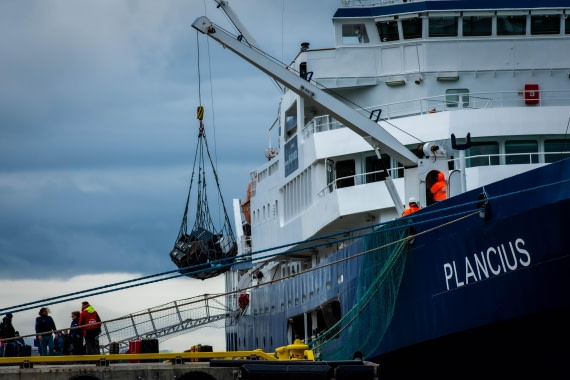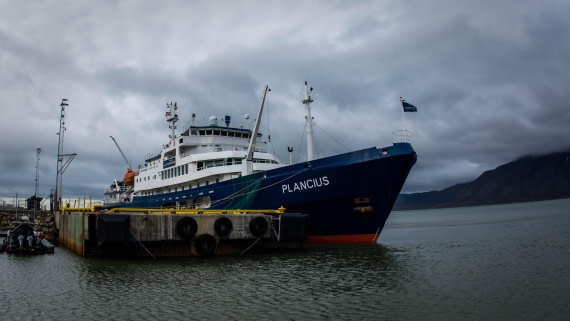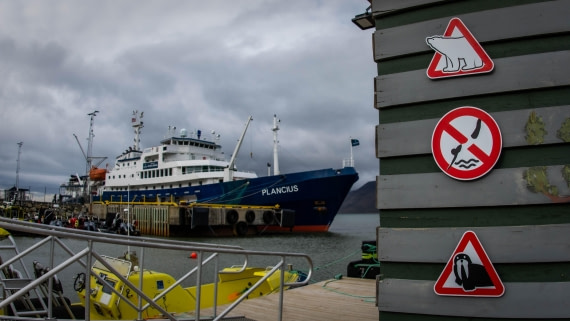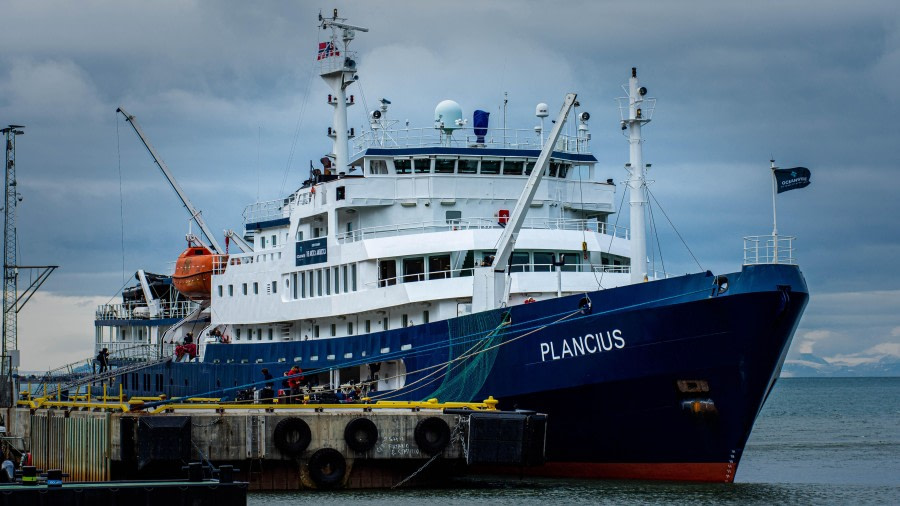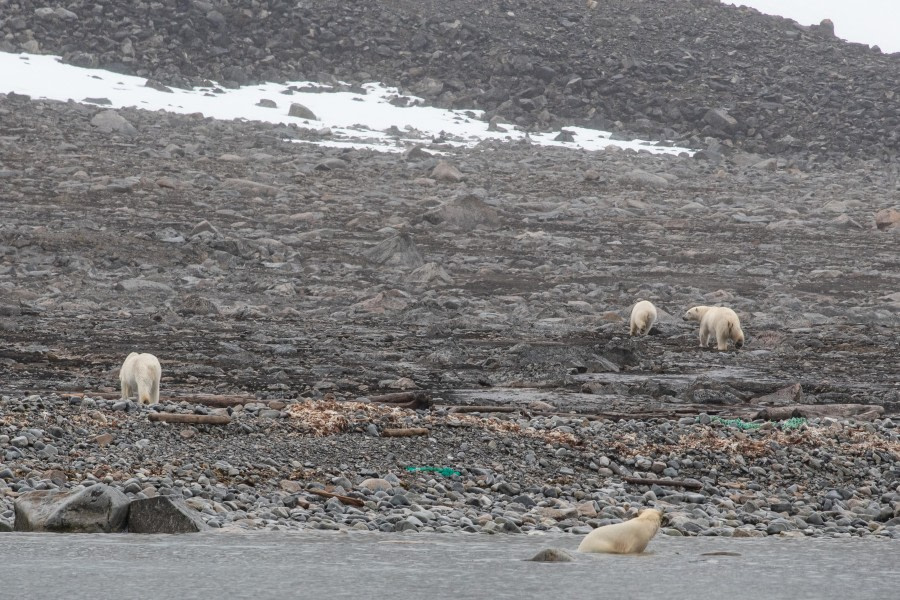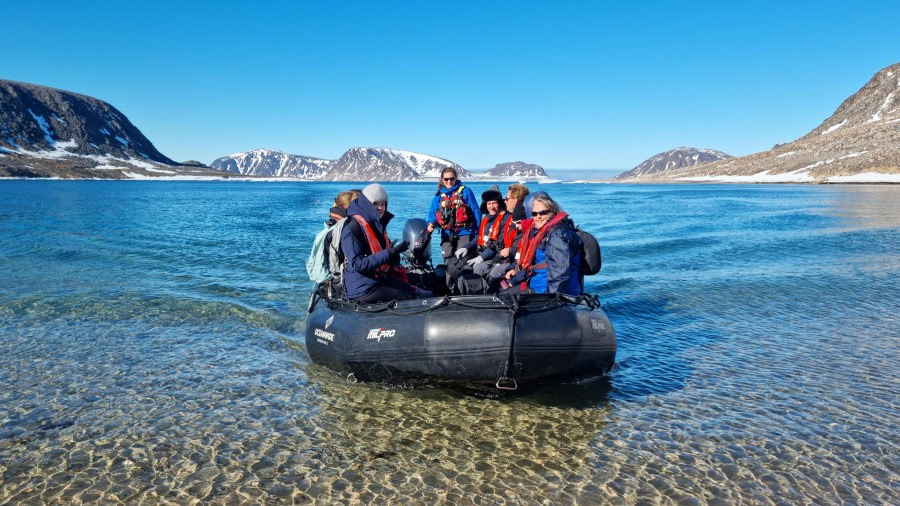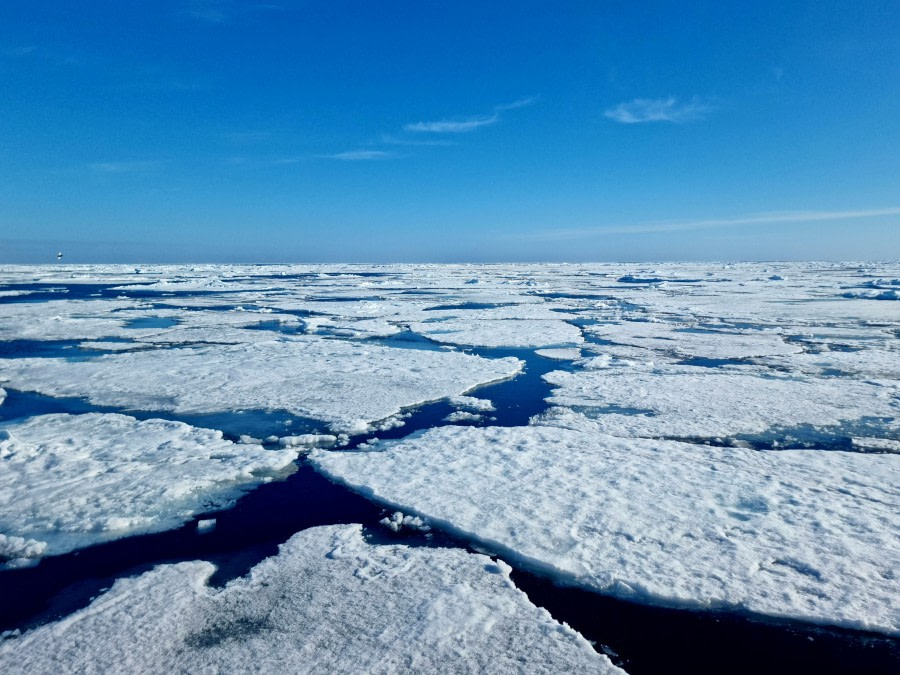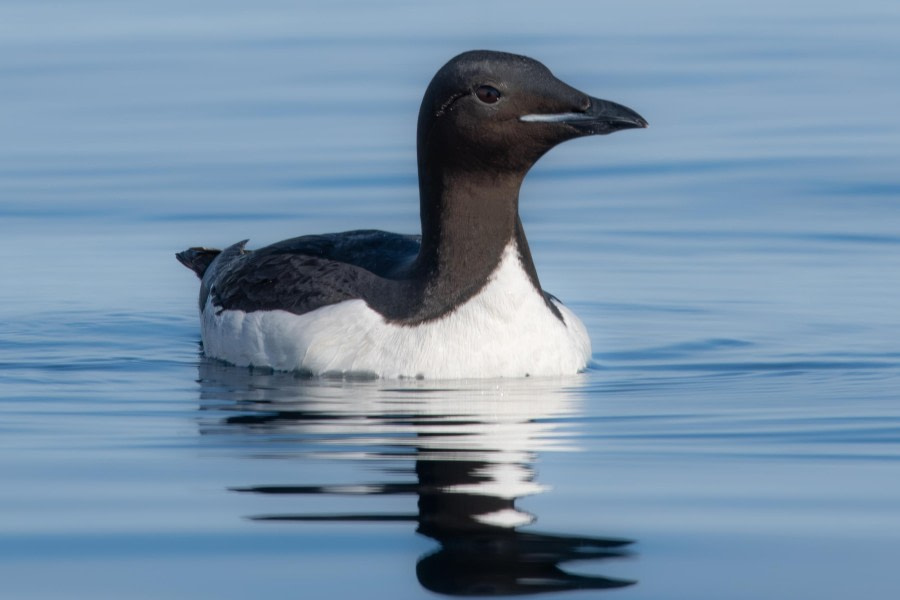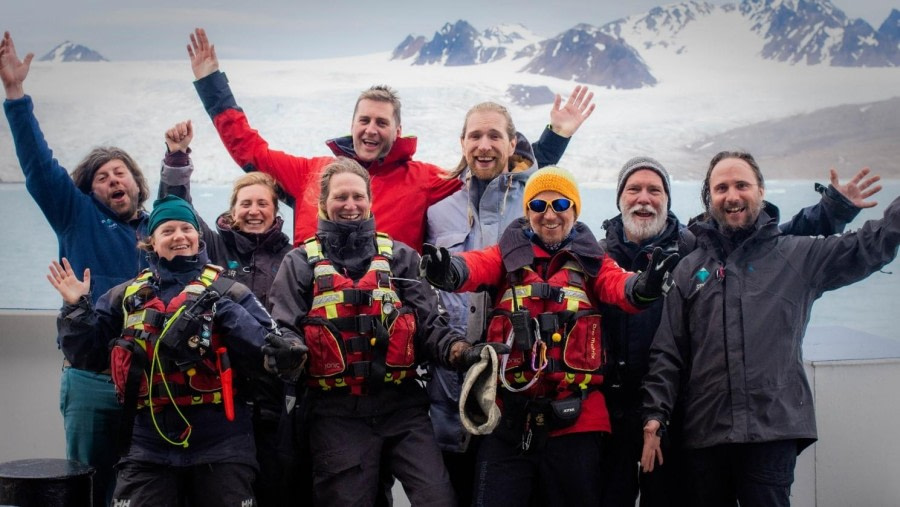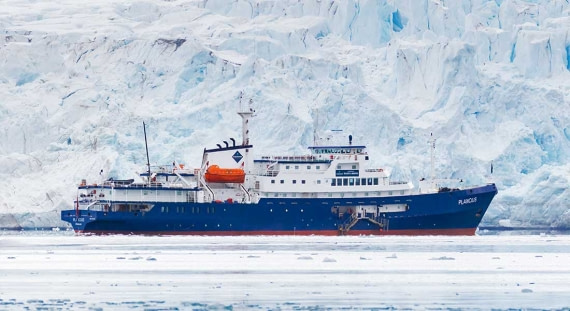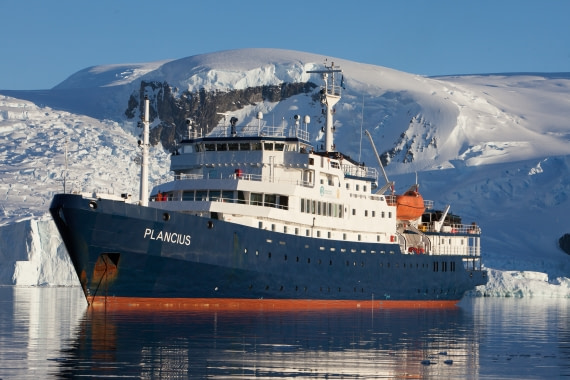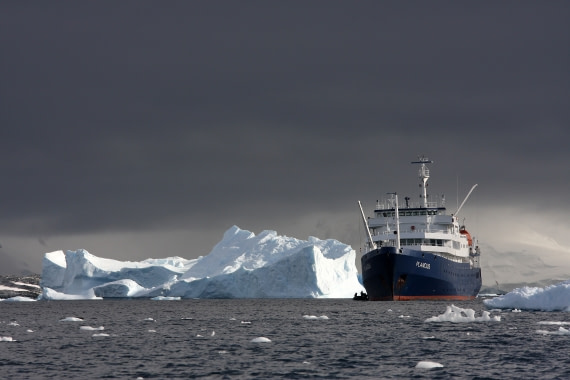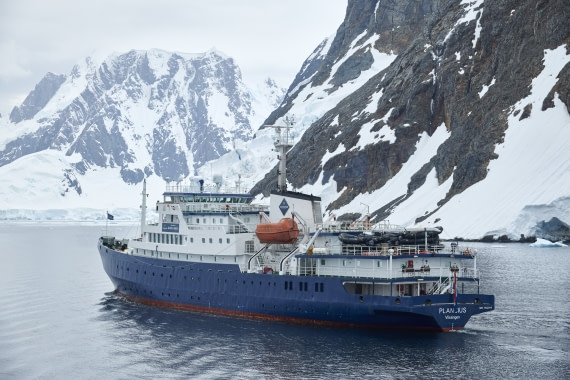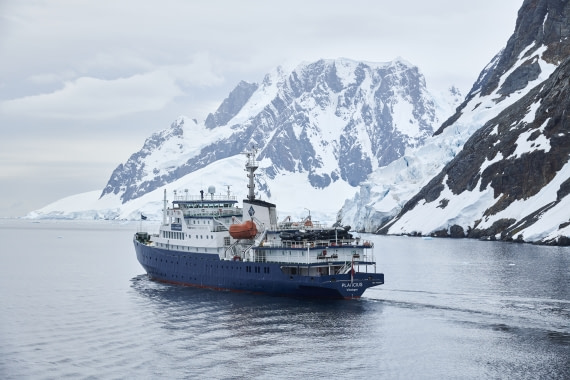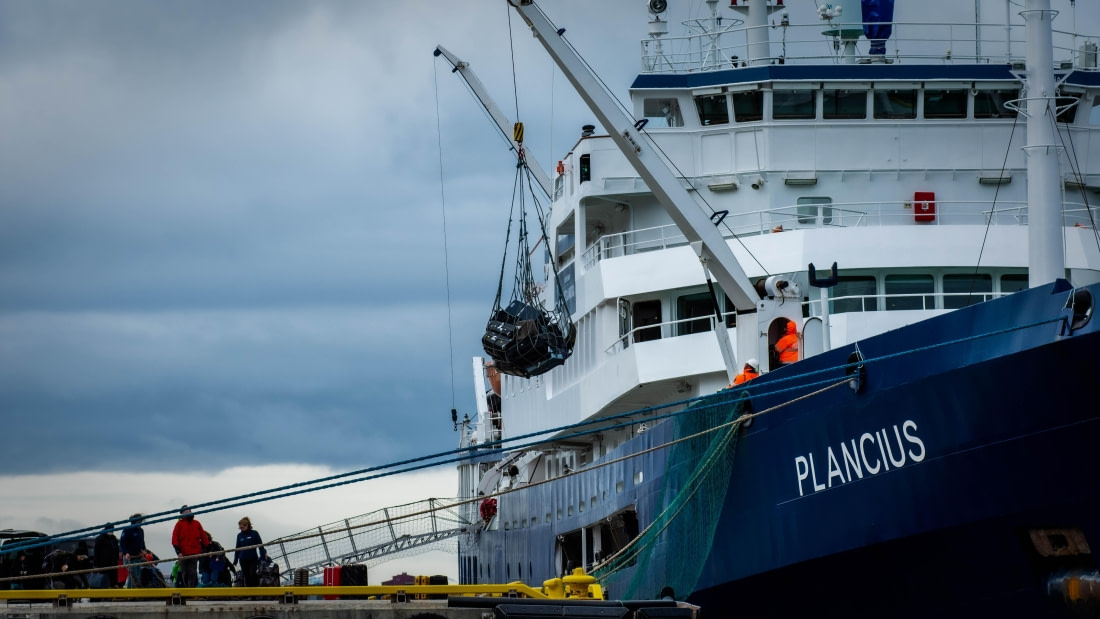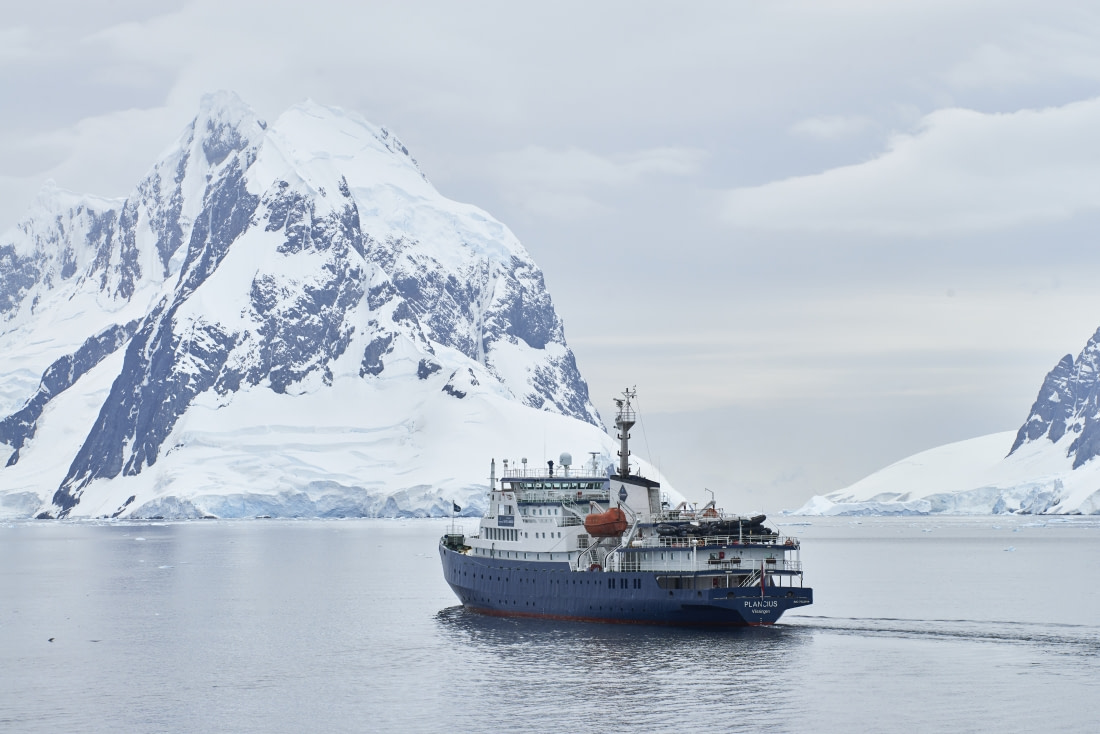| Fecha: |
28.06.2024 |
| Posición: |
79°45.3'N / 010°57.1'E |
| Viento: |
W4 |
| Clima: |
Nublado |
| Temperatura del Aire: |
+3 |
Fue una noche de sueño intranquilo para muchos, debido al movimiento del Plancius en el oleaje frente a la costa occidental de Prince Karls Foreland. Nos dirigimos hacia el norte durante toda la noche, con el objetivo de avanzar hacia nuestro primer destino previsto en Raudfjord.
Sin embargo, poco después de nuestra llamada, nuestro jefe de expedición nos informó por megafonía de la presencia de un oso polar a babor Nunca habíamos saltado tan rápido de la cama después de un mal sueño. Nos pusimos varias capas de ropa y salimos corriendo a las cubiertas exteriores para ver la carismática vida salvaje que atrae a tantos visitantes a estas frías y altas latitudes.
Observamos al oso moverse por la orilla, balanceándose despreocupadamente mientras recorría la playa. Aunque el movimiento parecía lento, el avance era tan rápido que tuvimos que ajustar nuestra descripción a los invitados que acababan de aparecer en la cubierta. La lluvia no nos molestó mientras permanecíamos de pie, observando alegremente al oso polar antes del desayuno del primer día completo de nuestra expedición
Después de un rato observando al oso, nos pusimos en marcha hacia el norte. El lugar donde habíamos visto a nuestro oso polar, en Sørgattet, al sur de Danskøya, estaba aún a unas horas de nuestro lugar de aterrizaje previsto por la mañana. Por lo tanto, ajustamos nuestros planes al más puro estilo expedicionario y nos dirigimos hacia la opción del plan B para la mañana.
Justo cuando estaban a punto de comenzar las reuniones informativas obligatorias, no uno, sino dos osos fueron vistos en Amsterdamøya, una pequeña isla que todavía no estaba donde habíamos planeado ir. Se volvieron a hacer ajustes importantes. Phillipp impartió una breve sesión informativa obligatoria en el salón antes de que nos pusiéramos las capas y nos dirigiéramos a la pasarela. Nos amontonamos en las zodiacs, ansiosos por salir al agua en medio de las nubes bajas en busca de los osos polares. Ya habíamos visto 4 osos (y 2 frailecillos) (y 2 frailecillos)
Dos de los osos estaban jugando en la orilla cuando llegamos. Mientras observábamos pudimos ver que se trataba de una madre con un osezno, probablemente de poco más de 2 años, casi listo para dejar a su madre. Le estaban enseñando a cazar focas, una habilidad útil cuando hay una colonia residente de focas en la bahía de al lado.
Una madre con un osezno apareció sobre las rocas bajas, lo que nos hizo ver lo difícil que puede ser ver a un oso polar en lo que a primera vista parece un terreno llano. La madre y el osezno empezaron a acercarse a los dos que jugaban en la orilla. Su vulnerabilidad era evidente con una cría tan joven y el osezno mayor salió del agua para reclamar. Tras un intercambio de miradas y un cambio de rumbo, el cachorro mayor y la madre se dirigieron hacia el cadáver que yacía en la playa.
Fue una increíble serie de comportamientos que pudimos observar. Todos regresamos a Plancius con sonrisas radiantes, hablando de las actividades que habíamos presenciado y del resto de la fauna y la historia de esta zona del lado este de Amsterdamøya llamada Smeerenburg.
Tras una rápida parada a bordo para recibir información y almorzar, llegó la hora de partir de nuevo. Finalmente llegamos a nuestro lugar de aterrizaje previsto para la mañana, ¡y no es que hubiéramos cambiado nada de nuestra mañana reprogramada!
Alicehamna es un hermoso lugar en el lado este del fiordo Raudfjord. Este fiordo tiene un espectacular paisaje dramático en la costa occidental y montañas onduladas convenientemente accesibles en el lado oriental. Desembarcamos cerca de una pequeña cabaña de finales de los años 20 construida por Stockholm-Sven, como se le conoce localmente. Las renovaciones más recientes han dejado la cabaña en buenas condiciones para visitantes como nosotros y para quienes buscan un refugio de emergencia (no nosotros).
Nos dividimos en grupos para satisfacer nuestros intereses; ya fuera para hacer una buena caminata con vistas magníficas, una caminata más corta con charlas fascinantes o un paseo corto con mucha información y discusiones en torno a lo que podíamos ver.
De vuelta al embarcadero, nos ajustamos los chalecos salvavidas y regresamos a Plancius. Antes de una deliciosa cena emplatada, hicimos una recapitulación final para redondear este inmejorable primer día en Spitsbergen

